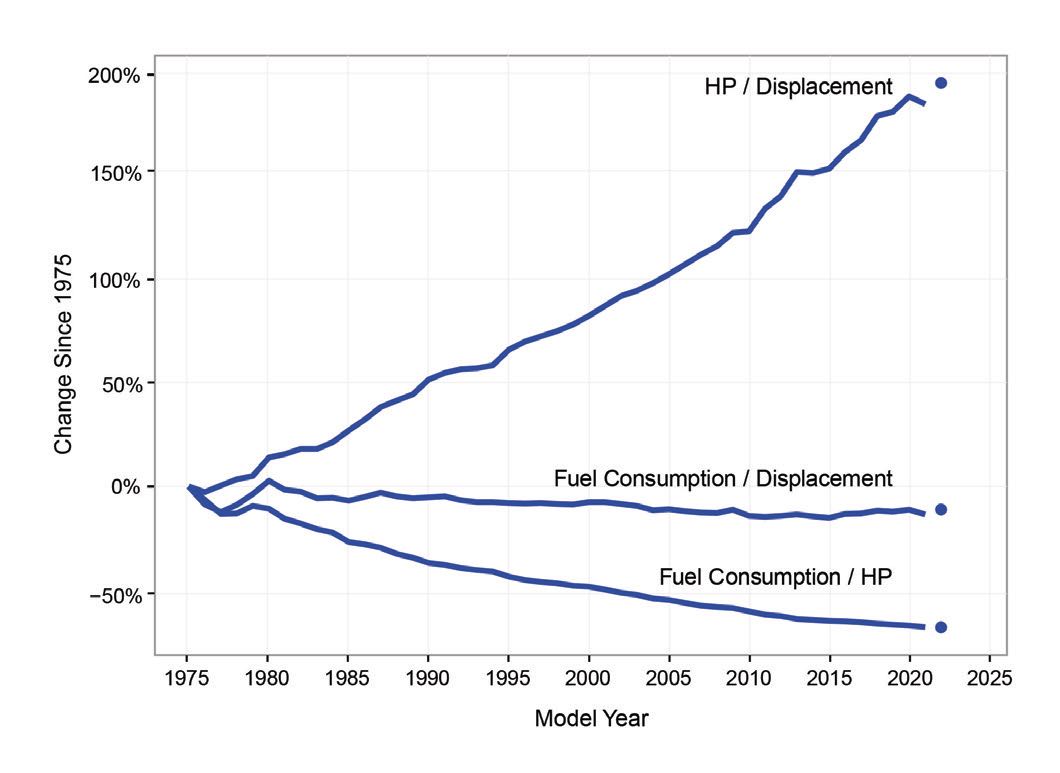The 2022 EPA Automotive Trends Report is now available, and as usual, it is a treasure trove of information. You can download the report for free,
1 but be prepared to spend some time digesting the 158 pages of data and analysis!
One graph that caught my attention is Figure 1, which shows the evolution of several gasoline engine performance characteristics as a function of time. Note that the two upper lines on the graph show power and fuel consumption divided by engine displacement, while the lower line shows fuel consumption divided by power. The trends are striking for two reasons. One is the nearly straight-line behavior of all three trends over nearly 50 years. The other is the ongoing improvements in gasoline engines, in spite of the shift in popular interest toward electric vehicles. Also note that the solid lines represent data from complete model years, while the dots at the end of each line are the projected values for 2022, based on preliminary data and subject to revision.
 Figure 1. Evolution of several gasoline engine performance characteristics as a function of time.1
Figure 1. Evolution of several gasoline engine performance characteristics as a function of time.1
These improvements are testament to the efforts of a number of automotive disciplines, including the tribologist. Reductions in friction and the implementation of advanced engine oils have contributed significantly. How long can this progress continue? A few facts would argue that the progress will come to an end, and relatively soon.
First of all, even a cursory review of the automotive business literature will show a dearth of investment in the internal combustion engine, while electric vehicle and battery plants appear to be garnering the vast majority of money and attention. Secondly, an engineer named Nicolas Léonard Sadi Carnot showed that there is fundamental limit to the efficiency of any engine that converts heat into useful work.
Given the operating conditions of the gasoline engine, the Carnot limit is around 40%, meaning that over half of the energy liberated during combustion is unavailable. An examination of the lower curve in the graph shows that power liberated from a given amount of fuel has increased greatly over the last 50 years. The most efficient modern engines are approaching 35% efficiency, indicating that the impressive gains of the past are just that—in the past!
Even without major investment, engine efficiency will continue to improve, at least in small amounts, for years to come. The main reason for that is the amount of time it takes for research and development in engines to reach production. While lead times vary considerably among manufacturers, we should continue to see implementation of technologies already in development for another three to 10 years. Unfortunately, that will probably be the end of the internal combustion engine as an advanced technology, and we will move into the era of the engine as an appliance, with little difference between brands, except cosmetic. After all, the carmakers must offer something that is at least superficially different from their competitors, in order for each to claim theirs is the best!
REFERENCE
1.
www.epa.gov/automotive-trends